This article outlines the science behind the recommendations and guidance contained within the TB biosecurity Five Point Plan. Bovine TB (bTB) is an infectious and contagious, mainly respiratory disease of cattle caused by the bacterium Mycobacterium bovis (M. bovis). Control is difficult for several reasons, including the ability of M. bovis to ‘hide’ in the immune system of the host, the imperfect sensitivity of available diagnostic tests, and because the pathogen also infects wildlife, primarily badgers in the UK [1].
Risk factors for bTB infection vary across regions due to different farm structures and farm management practices, including the use of more than one premises. Other risk factors include a large herd size, a history of prior TB breakdowns in the same herd, the use of covered housing for animals, cattle buying practices, and the prevalence of TB in local wildlife and cattle herds [2]. As a result, there is no universal solution to reduce the risk of a TB breakdown. Changes to farm management practices can potentially reduce cattle-to-cattle transmission (for example, strict isolation of reactors and double-fencing to keep herds separate), and this article offers a summary of the available evidence base. Several reviews encourage the implementation of practical and precautionary biosecurity measures [1, 2, 3]. Scientific studies have endorsed the provision of evidence-based information to promote the adoption of biosecurity ‘best practice’ amongst the farming community [4]. This is what the TB biosecurity Five Point Plan aims to do.
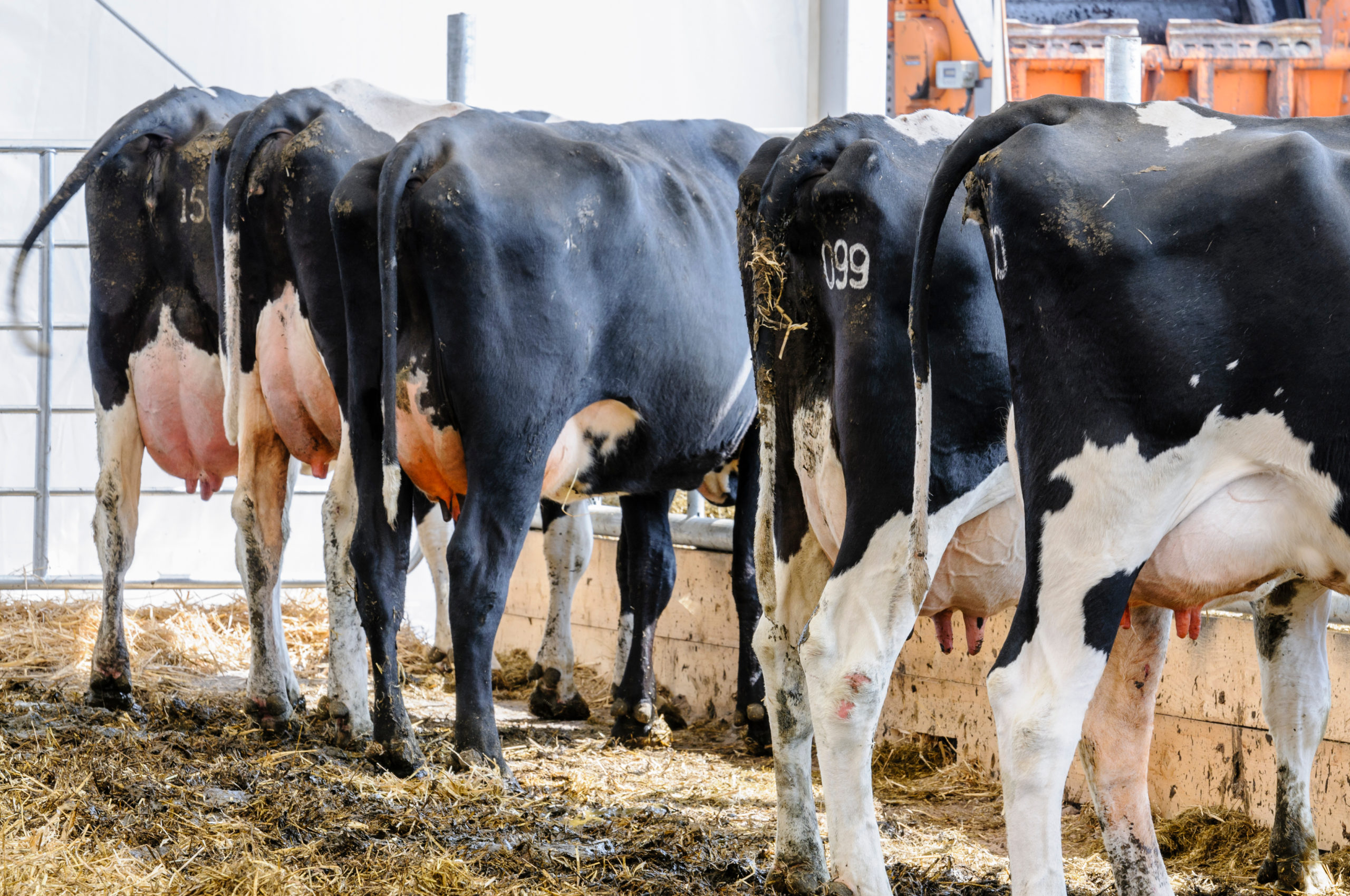
Background
To appreciate the evidence base on the biosecurity measures discussed in this article, it is important to relate these measures to the common ways in which cattle and badgers, the main hosts of M. bovis in the UK, acquire the infection.
Based on the distribution of visible lesions found in TB reactor cattle, infection of cattle is mainly by the respiratory route. This is supported by experimental evidence that the minimum infectious dose to establish infection by the oral route is 1,000 times that of the respiratory route. Respiratory excretion and inhalation of M. bovis is considered to be the main route for cattle to cattle transmission [31].
Indirect transmission via the respiratory route could potentially occur from contaminated aerosols generated during spreading of infective material (e.g. slurry) or inhalation of contaminated dust particles, droplets of contaminated water or aerosols generated during eructation when on contaminated pastures, but the supporting evidence is sparse [31].

M. bovis was first isolated from badgers in England in 1971 during an investigation into a TB breakdown in cattle in Gloucestershire. Since then, infected badgers have been found throughout south west England and parts of Wales and represent a source of TB infection for cattle [42].
The first site of TB infection in badgers is generally the mucosal lining of the respiratory system following aerosol infection, with slow disease progression thereafter. M. bovis excretion in sputum (thick mucus made in the lungs) can result in lung lesions. Faecal contamination is also possible in badgers when sputum is coughed up and swallowed (with any bacteria that may have survived the acid pH conditions of the stomach). These are the most common sources of the TB bacterium in infected badgers, but openly draining lymph nodes (glands), infected bite wounds and infected urine (due to spread of infection to the kidneys) are other sources [42].
1. Restrict contact between badgers & cattle
Cattle exposure to direct or indirect contact with badgers will vary between farms, depending on the farm management practices [4].
Find out if badgers visit your farm
A study on the effectiveness of biosecurity measures in preventing badger visits to farm buildings [5] concluded that badgers:
- enter farm buildings when gates are left open or when a new potential entrance point in the building is not repaired
- are attracted to some farms more than others, for reasons that have not been fully determined (so, the benefits of measures to exclude badgers will vary)
- are more likely to access your farm if livestock feed is easily accessible
Direct contact between badgers and cattle at pasture appears to be relatively infrequent, however indirect contact (e.g. via the same feeding area) can be common [6] [43]. Badgers infected with TB can exhibit different ranging behaviours. These include larger home ranges, ranging over a greater proportion of their own territory, an increased proportion of their home range extending into neighbouring territories, and foraging further away from their main sett. These behaviours may increase the likelihood of direct and indirect contact with cattle [7,8].
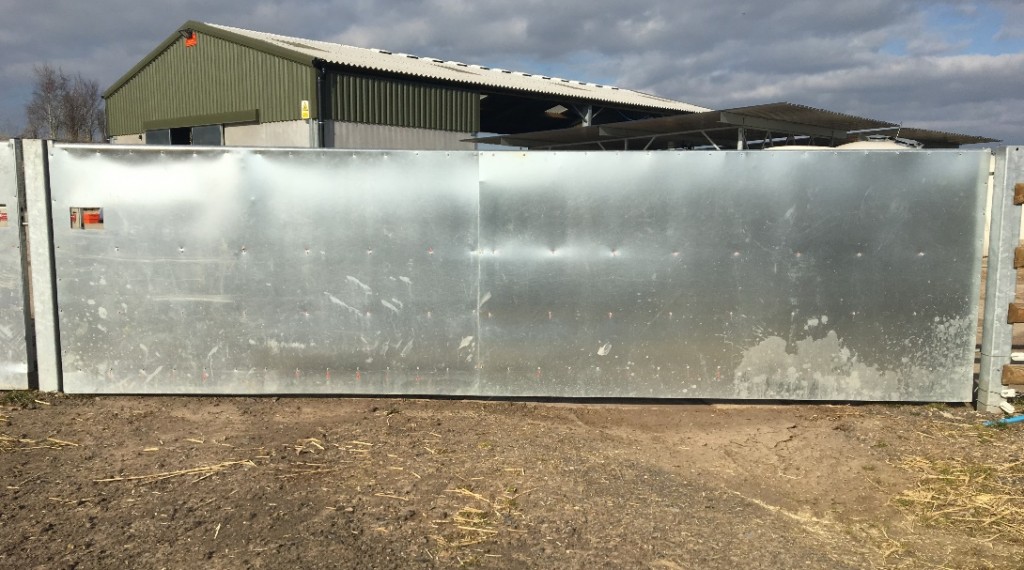
Introduce barriers to prevent badgers accessing cattle
This study also concluded that exclusion measures can be 100% successful in reducing badger visits to farm buildings when properly maintained [5].
Exclusion measures include:
- solid aluminium sheeted gates
- aluminium sheeting on rail fences
- retractable electric fencing – badgers are less likely to visit unfenced facilities on farms which use electric fencing around feed stores. This is known as the ‘deterrent effect’ [9].
- aluminium feed bin
- rail gate with adjustable galvanised aluminium panels

Limit access of cattle to badger latrines and setts
Cattle may potentially become infected with TB at pasture [10]. Infection can happen via the following ways:
- cattle may sniff or even move badger faeces to gain access to the grass below, which increases the risk of transmission [11]
- cattle may sniff badger urine
Urine from infected badgers has been reported to contain up to 250,000 colony forming units per millilitre (CFU/ml) of M. bovis bacteria. CFU/ml provides an estimate of the number of viable individual bacteria in a sample. In comparison, fewer M. bovis bacteria are thought to be excreted in badger faeces, with up to 75 colony forming units per gram of faeces observed [11].
Grazing regimes can potentially increase the chance of cattle accessing infectious badger excreta (faeces and urine). For example:
- set-stocked cattle (a fixed number of cattle grazed over one area of pasture for a prolonged period) has a higher probability that at least one animal will be exposed to potentially infectious material in a contaminated environment or where infected badgers are present, than in other grazing regimes
- cattle under rotational paddock grazing (where they are regularly moved between discrete pastures) are exposed to a particular area for a relatively shorter period, and tend to remain within a more cohesive herd [12]. This may reduce the risk of contact with potentially infectious material
- strip-grazing (keeping cattle within a narrow strip of pasture) tends to keep cattle in a cohesive herd, limiting the duration of potential exposure to badger excreta depending on the regularity of strip movement [12]. This reduces the amount of field edge available to cattle at any given time, which may reduce risks of contact with potentially infectious material
Grazing will always carry a potential risk of infection when infectious badgers and/or their excreta are present [13]. It has been estimated that restricting cattle access to badger latrines could potentially reduce the number of cattle infected per year by 50%, assuming that cattle would come into contact with all infected excreta within their grazing area and that this was the only route of transmission [13]. Care must, however, be applied to how this is done, as fencing the latrine off close to the latrine site can lead to the badgers extending the latrine area to the other side of the fence [43].
Although badgers use latrines all-year-round, there is a peak in activity during spring, and so efforts to exclude cattle from latrine sites might be most effective at this time of year [14]. Destruction and removal of latrines is unlikely to effectively reduce the risk of TB infection to cattle, as badgers may continue to visit the original site and urinate elsewhere. This wider distribution of badger urine on pasture could potentially increase the risk of disease infection to cattle [15,4]. Grazed pastures provide a high abundance of earthworms, which are preferentially consumed by badgers [4].
2. Manage cattle feed and water
Badger-proof feed stores, troughs & mineral licks
Feed stores, water troughs, and mineral licks all provide opportunities for indirect TB infection between badgers and cattle [16]. If badgers and cattle can access the same feed and water, either when housed or at pasture, this increases the risk of a TB breakdown and spread [17]. As a result, a study of bTB in County Down, Northern Ireland [18] suggests that farmers:
- make feed stores badger-proof
- prevent badger access to buildings
- feed cattle from raised feed troughs

Don’t put feed on the ground at pasture and clean up spillages
Badgers have been seen visiting cattle housing and feed stores, attracted by food (mainly high energy cattle concentrates, but also maize and silage) and feed supplements [18]. A study found that ground feeding sites at pasture were the most likely site for indirect cattle and badger contact [43]. Badgers are, therefore, more likely to access your farm if feed is easily accessible [6].
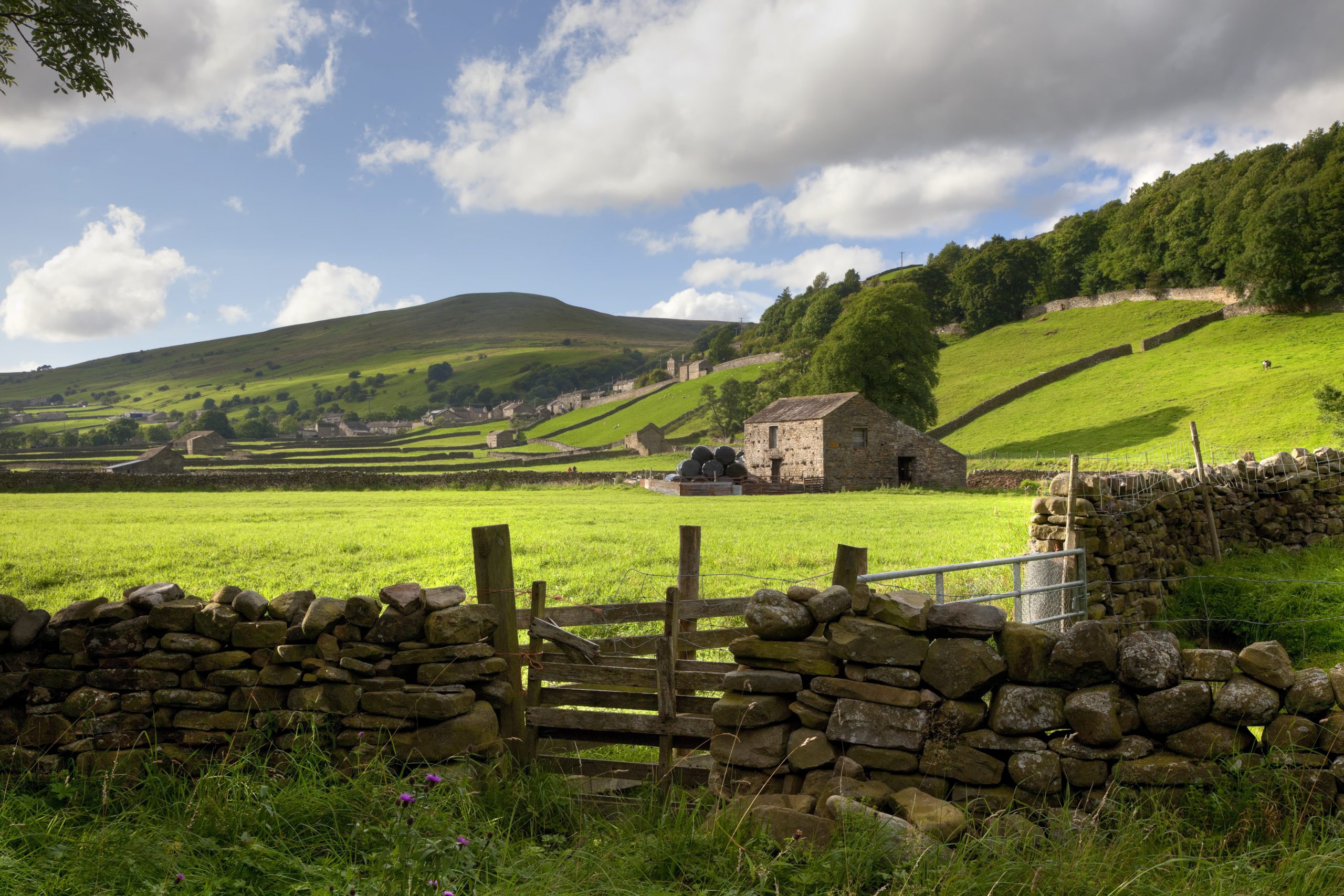
Use clean, fresh water and badger-proof water troughs
Several studies [19, 20, 21] identify infected wildlife accessing water sources as a risk factor. A review of cattle-to-cattle transmission, risk factors and susceptibility [22] also advises regular cleaning and disinfection of water troughs. If there are signs of badger activity, it is advisable to prevent badgers from accessing cattle water troughs by raising them to above 90cm.
Only feed waste milk to calves if it has been boiled or pasteurised
Contamination of cows' milk with M. bovis is a potential transmission risk, especially in animals with advanced infection. This can occur before such animals can be detected by skin or other ante mortem testing, or before they display overt clinical signs of disease [23,24].
3. Stop infected cattle entering the herd
Transmission occurs within cattle herds, and movement of undetected infected cattle can lead to transmission between herds [1]. In recent decades, the observed pattern of TB breakdowns in areas of low incidence has been correlated with cattle movements, mainly from high-incidence areas [1]. A study of the introduction of bTB to north east England in the wake of the Foot and Mouth Disease epidemic of 2001 [25] investigated the source of TB in 31 herds in north east England (Low Risk Area) that experienced breakdowns between January 2002 and June 2004. It identified that newly-purchased cattle was the biggest factor behind new TB infections. Outbreak data for 2004 were best explained by a model attributing 16% of herd infections directly to cattle movements [26]. The annual bTB epidemiology reports for England produced by APHA also show that the introduction of infected cattle is the greatest weighted contributor to the risk pathways of infection for herd incidents in the Low Risk Area of England [45].
Ask for TB information before you buy new cattle and check the herd’s TB history online using the ibTB online mapping tool
Cattle movements, especially movements from high-incidence areas, are associated with an increased risk of the onward transmission of bTB [1, 27, 28]. Studies on herd-level risk factors after the 2001 Foot and Mouth Disease epidemic and risk factors for cattle herds in south west England, identified that cattle trading or purchasing cattle from markets or herds in high-risk areas increases the risk of infecting the existing herd [17,29].
Post-movement test cattle entering the herd
The review of herd-level risk factors for bTB advises that detecting infections early by testing new or existing animals as soon as possible is the best way to interrupt TB transmission [3].
A report on cattle movements and bTB in Great Britain [30] found that movements were consistently the main factor of TB disease occurrence. This finding supports the introduction of more stringent cattle movement controls, as cattle movement outperforms other factors (environmental) in spreading TB disease.
The requirement for post-movement testing in Scotland has been shown to incentivise to farmers to purchase cattle from low-disease areas and so probably reduces the risk to the individual herds owned by these farmers, and limits onward transmission [1]. A statutory requirement to post-movement test all cattle arriving in the Low Risk Area of England from the annually (or more frequent) tested areas of GB was introduced in April 2016. This policy was then extended to herds in annual testing parts of the Edge Area of England on 1 August 2023. Private post-movement skin (and in England interferon-gamma) testing of animals that are not eligible for a statutory post-movement test can also be arranged subject to prior permission from APHA.
Isolate all higher-risk cattle before they enter a herd
A study of bTB in County Down, Northern Ireland recommended that farmers should maintain a closed herd and consider mitigating strategies such as pre- and/or post-movement TB testing and isolation of purchased animals [18]. The review of cattle-to-cattle transmission, risk factors and susceptibility recommended that purchased animals should be isolated and pre- or post-movement testing should be completed [22].
4. Reduce risk from neighbouring herds
Check local TB breakdown data online at ibTB
Transmission occurs within cattle herds, and movement of undetected infected cattle can lead to transmission between herds [1]. Some short-distance cattle movements and other interactions between cattle on nearby or linked premises will be unrecorded and could result in cattle-to-cattle transmission of TB, though the extent of this is not well quantified [1].
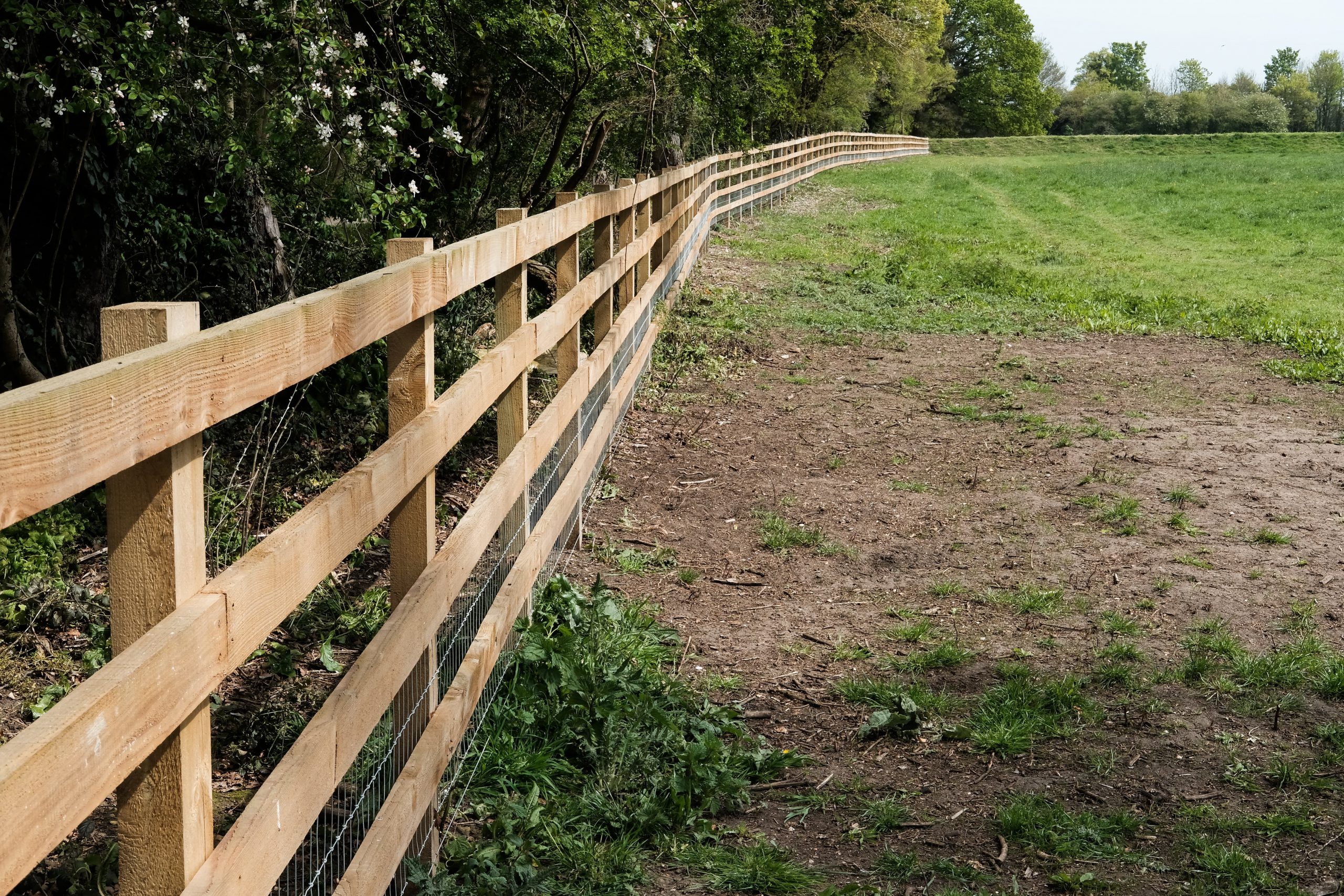
Put in place effective barriers between neighbouring herds
The study on herd-level risk factors after the 2001 Foot and Mouth Disease epidemic reported that contacts with cattle from contiguous herds and sourcing cattle from herds with a recent TB history were associated with an increased risk of a TB breakdown [17].
The review of cattle-to-cattle transmission, risk factors and susceptibility recommended that secure fencing and physical barriers between herds should be enforced [22]. Secure perimeter fencing and double-fencing of boundary fields (or other methods to prevent close contact between cattle herds) offers a cost-effective means of controlling numerous infectious cattle diseases [18,22].
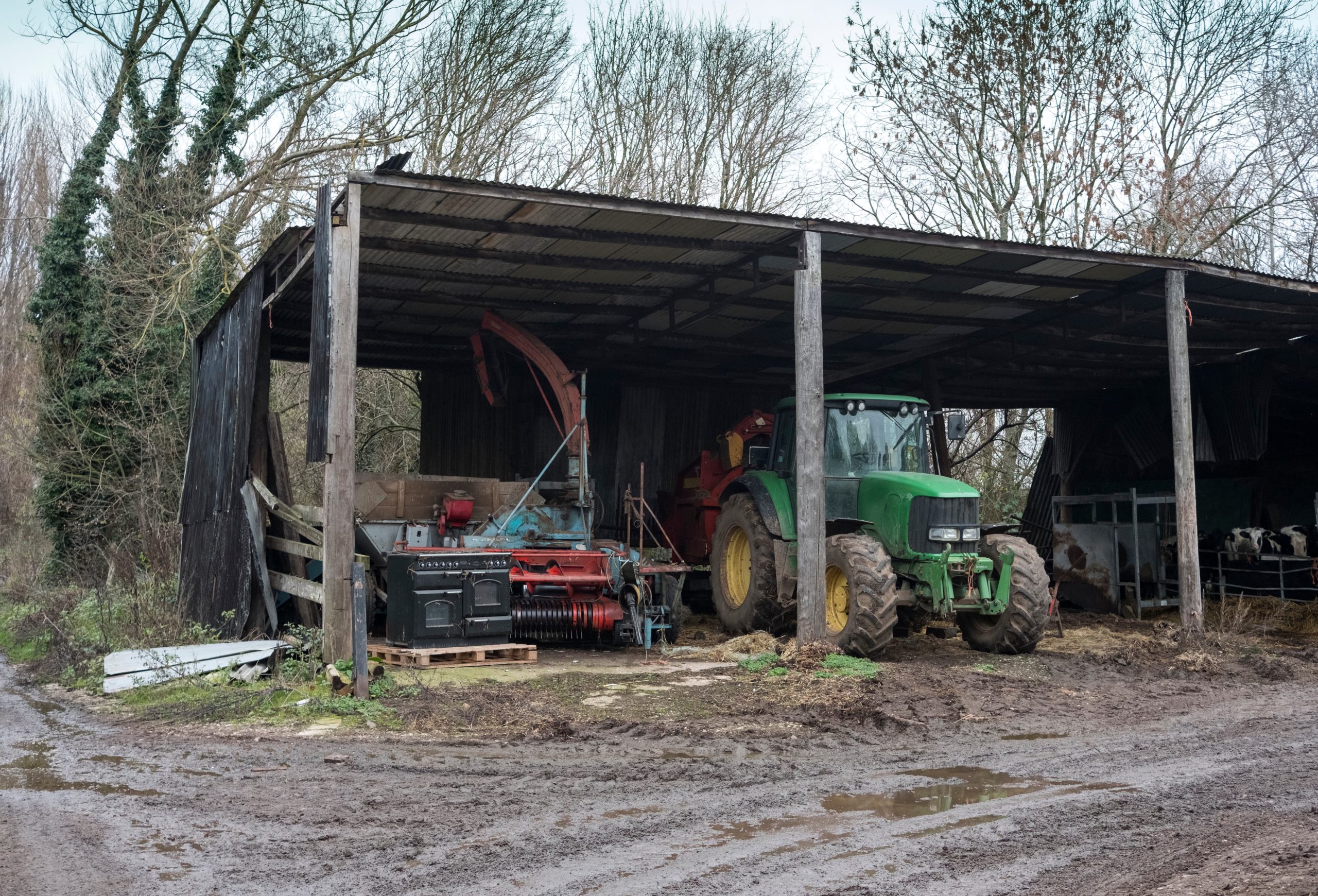
Avoid sharing equipment or vehicles with other farms
Sharing farm equipment is not advised [18]. This includes the hiring and sharing of bulls, which should be discouraged [22]. Thoroughly clean and disinfect equipment used for slurry before moving off the farm to another property [31].
Avoid sharing cattle grazing with other herds
The studies on herd-level risk factors after the 2001 Foot and Mouth Disease epidemic, and bTB in County Down, Northern Ireland, show that contacts with cattle from contiguous herds and sourcing cattle from herds with a recent TB history were associated with an increased risk of TB breakdown [17,18].
5. Minimise infection from cattle manure
Spreading TB via contaminated cattle slurry and manure was considered in a qualitative veterinary analysis of the risk of transmission of M. bovis through the disposal on farmland of cattle slurry and manure from TB breakdown herds [32]. It was proposed that contaminated slurry or manure could potentially spread M. bovis by the respiratory and ingestion routes, although the risk was considered to be low. This would require that at least one bovine in the herd was infected, infectious, and shedding bacteria in faeces, urine (unlikely), or milk that was disposed of in slurry.
A research project funded by Defra gathered data on the level of TB infectivity (M. bovis) present in the faeces of TB reactor cattle in England and Ireland [44]. The researchers collected faecal samples from 72 cattle naturally infected with M. bovis and from 12 cattle experimentally infected with M. bovis. The samples were subjected to microbiological culture and polymerase chain reaction (PCR) testing to look for evidence of M. bovis. The study found that levels of M. bovis bacteria in the faecal samples of TB-infected cattle were extremely low. Although the results of this research suggest that the risk of spreading TB through using slurry or manure as an agricultural fertiliser is lower than suggested in some historical scientific literature, the Animal & Plant Health Agency (APHA) still recommends that farmers take a precautionary approach and follow the guidance on handling, storing and spreading slurry and manure in the TB biosecurity Five Point Plan.
There are risks of creating aerosols by spreading slurry according to a report on bTB: an update [33]. Thus, research suggests managing the risks of spreading TB via slurry or manure. Recommendations include:
- cattle manure with low moisture levels and high straw content should be stored in a heap to heat and decompose for a minimum of 30 days before disposal on farm land, otherwise manure should be treated as for slurry
- advice on suggested concentrations, applications, and other chemical compounds known to kill the TB bacterium can found on the Defra approved list of disinfectants
- dispose of slurry and manure on arable land, either by injection below the surface or by ploughing it in immediately after spreading, and ensure that the land is not grazed by cattle or cut for forage for at least two months
- dispose of slurry and manure only on land within the affected farm which is not accessible to cattle from other herds
- spread slurry and manure under conditions that minimise or eliminate chances of generating bacterial aerosols which can be breathed in and/or digested by other cattle
- avoid sharing spreading equipment
Indirect transmission of TB could potentially occur through inhalation/ingestion of infectious aerosols produced during slurry spreading or inhalation/ingestion of the bacteria from contaminated pasture, soil and silage. This potential risk can be managed by following the recommendations above for best-practice spreading of slurry and manure [31].
Store manure for a long period before spreading on your farm
Studies indicate that inadequate storage of slurry is associated with an increased risk of TB transmission, as TB bacteria can remain active in soil for about six months, which can be ingested by cattle [31]. Slurry storage for six months is supported by experimental studies on five farms in County Dublin [34].
The longer waste products are stored and the longer the land where they are spread is not grazed, the smaller the risk of TB infection. TB bacteria survive in moist, cool conditions rich in organic matter, especially when it is away from direct sunlight. Slurry can remain contaminated when stored for less than six months [35].
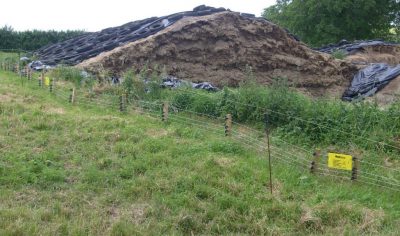
The review of cattle-to-cattle transmission, risk factors and susceptibility advises that M. bovis may be excreted or secreted into soil from cattle faeces. The bacteria probably remain viable and pathogenic in soil for about six months [22]
A study on TB in cattle: reducing the risk of herd exposure, stated that solid manure (faeces) should be properly composted for many months before land-spreading [36].
Studies on temperatures in cattle manure recorded on five farms in County Dublin, cattle manure and the spread of bTB, and aerosol dispersal of cattle slurry on bTB-restricted holdings, concluded that the disease risks from spreading slurry with less than six months of storage were two-times higher in their research of Irish farms [34,37,38].
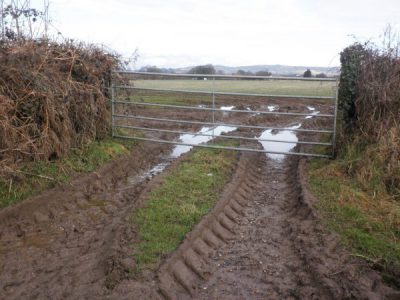
Only spread manure on arable land or pasture that is not going to be grazed by cattle for at least two months
If slurry is to be spread on grazing pasture, land should not be grazed for at least two months following spreading. Alternatively, slurry should be spread on arable land by injection or ploughing [31]. TB bacteria are able to survive in the environment for significant periods of time [22].
The study on TB risk factors of cattle herds in south west England concluded that storing manure and slurry indoors or in a closed container, and spreading manure all year, are associated with increased risk of spreading TB as it allows TB to persist in the environment and thus has the potential to infect cattle [29].
Minimise aerosols and contamination of roadways when spreading
The likelihood of infection may be reduced by the dilution effect (of air, uninfected soil and uninfected slurry/manure) but there are risks of creating aerosols by spreading slurry [30]. Cattle slurry and manure should be disposed of on farm land not accessible to other herds. Spreading slurry can generate aerosols that potentially carry bacteria for considerable distances downwind under favourable conditions, including to neighbouring farms [31].
Manure should only be spread when conditions minimize aerosol production. Mixing and pumping slurry should be avoided while animals are present to prevent inhalation of aerosols that are generated from spreading slurry [31, 35].
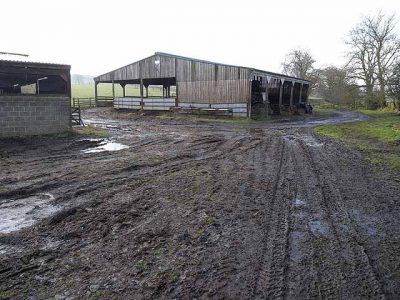
Their recommendations are:
- slurry should be spread in calm weather (not windy)
- avoid using a method which produces aerosols (very small droplets)
- slurry application should be avoided outright when cattle are in neighbouring fields and when slurry risks drifting into neighbouring fields even when there are no cattle on them
Don’t spread manure from other farms
If spreading manure or slurry from other farms is unavoidable, it should only be spread when conditions minimise aerosol production. Cattle keepers should avoid sharing spreading equipment [22].
References
1. Charles H, Godfray J, Donnelly CA, Kao RR, Macdonald DW, McDonald RA, Petrokofsky G, Wood JLN, Woodroffe R, Young DB, McLean AR. 2013 A restatement of the natural science evidence base relevant to the control of bovine tuberculosis in Great Britain.
2. Bourne FJ, Donnelly CA, Cox DR, Gettinby G, McInerney J, Morrison I, Woodroffe R. 2007 Bovine TB: the scientific evidence. A Science Base for a Sustainable Policy to Control TB in Cattle’, An Epidemiological Investigation in Bovine Tuberculosis. Final Report of the Group on Cattle TB. Defra.
3. Skuce RA, Allen AR, McDowell SWJ. 2012 Herd-Level Risk Factors for Bovine Tuberculosis: A Literature Review. Veterinary Sciences Division, Agri-Food and Biosciences Institute. Veterinary Sciences Division, Agri-Food and Biosciences Institute.
4. Ward AI, Judge J, Delahay R. 2009 Farm husbandry and badger behaviour: opportunities to manage badger to cattle transmission of Mycobacterium bovis? The Food and Environment Research Agency, Preventive Veterinary Medicine.
5. Judge J, McDonald RA, Walker N, Delahay RJ. 2011 Effectiveness of Biosecurity Measures in Preventing Badger Visits to Farm Buildings. (PLoS ONE volume 6, issue 12, pp. 1-8).
6. Bohm M, Hutchings MR, White PCL. 2009 Contact Networks in a Wildlife-Livestock Host Community: Identifying High-Risk Individuals in the Transmission of Bovine TB among Badgers and Cattle. PLoS ONE, 4.
7. Garnett BT, Delahay RJ, Roper TJ. 2002 Use of cattle farm resources by badgers (Meles meles) and risk of bovine tuberculosis (Mycobacterium bovis) transmission to cattle. Proc. R. Soc. B., 269, (2002), pp. 1487-1491).
8. Garnett BT, Delahay RJ, Roper TJ. 2005 Ranging behaviour of European badgers (Meles meles) in relation to bovine tuberculosis (Mycobacterium bovis) infection. Appl. Anim. Behav. Sci. 94 (2005), pp. 331-340.
9. Tolhurst BA, Ward AI, Delahay RJ, MacMaster A, Roper TJ. 2008 The behavioural responses of badgers (Meles meles) to exclusion from farm buildings using an electric fence. Applied Animal Behavioural Science, 113 (1-3), pp. 224-235).
10. Bentham PFJ. 1985 The behaviour of badgers and cattle and some factors that affect the chance of contact between the species.
11. Hutchings MR, Harris S. 1997 Effects of Farm Management practices on Cattle Grazing Behaviour and the Potential for Transmission of Bovine Tuberculosis from Badgers to Cattle. Vet. J. 153 (1997), pp. 149-152.).
12. Phillips CJC. 2001 Principles of Cattle Production. CABI Publishing, Wallingford, (2001).
13. Gallagher E, Kelly L, Pfeiffer D, Wooldridge M. 2003 A quantitative risk assessment for badger to cattle transmission of Mycobacterium bovis. Proc. Soc. Vet. Epidemiol. Prev. Med. (2003), pp. 33-44).
14. Roper TJ, Conradt L, Butler J, Christian SE, Ostler J, Schmid TK. 1993 Territorial Marking With Faeces in Badgers (Meles Meles): a Comparison of Boundary and Hinterland Latrine Use. Behaviour, 127 (1993), pp. 289-307).
15. King, E. 1997 Factors influencing the risks to cattle of infection with bovine tuberculosis (Mycobacterium bovis) from badgers (Meles meles). PhD Thesis, University of Bristol.
16. O’Mahony T. 2014 Use of water troughs by badgers and cattle. The Veterinary Journal, 202 (2014), pp. 628-629.
17. Johnston WT, Vial F, Gettinby G, Bourne FJ, Clifton-Hadley RS, Cox DR. 2011 Herd-level risk factors of bovine tuberculosis in England and Wales after the 2001 foot-and-mouth disease epidemic. Int J Infect Dis, September 2011.
18. O’Hagan MJH, Matthews DI, Laird C, McDowell SWJ. 2013 Bovine Tuberculosis Biosecurity Study, County Down, Northern Ireland, 2010-2011. Agri-Food and Biosciences Institute, Belfast.
19. Barasona JC, VerCauteren KC, Saklou N, Gortazar C, Vicente J. 2013 Effectiveness of Cattle Operated Bump Gates and Exclusion Fences in Preventing Ungulate Multi-host Sanitary Interaction. Preventative Veterinary Medicine, 111 (2013), pp. 42-50.
20. Acevedo P, Vicente J, Hofle U, Cassinello J, Ruiz-Fons F, Gortazar C. 2007 Estimation of European Wild Boar Relative Abundance and Aggression: A Novel Method in Epidemiological Risk Assessment. Epidemiology and Infection, 135 (2007), pp. 519-527.
21. Cowie CE, Beck BB, Gortazar C, Vicente J, Hutchings MR. Moran D, White PCL. 2013 Risk Factors for the Detected Presence of Mycobacterium bovis in Cattle in South Central Spain. European Journal of Wildlife Research, 60 (2014), pp. 113-123).
22. Skuce RA, Allen AR, McDowell SWJ. 2011 Bovine Tuberculosis (TB) A Review Of Cattle-To-Cattle Transmission, Risk Factors And Susceptibility. pp. 4.
23. Figueiredo EES, Silvestre FG, Campos WN, Furlanetto LV, Medeiros L, Lilenbaum W, Fonseca LS, Silva JT, Paschoalin VMF. 2009 Identification of Mycobacterium bovis isolates by a multiple PCR. Brazilian Journal of Microbiology, 41 (2), (2010).
24. Zarden C, Marassi C, Figueiredo EES, Lilenbaum W. 2013 Mycobacterium bovis detection from milk of negative skin test cows. Veterinary Record.
25. Gopal R, Goodchild A, Hewinson G, de la Rua-Domenech R, Clifton-Hadley R. 2006 Introduction of bovine tuberculosis to north-east England by bought-in-cattle. Vet. Rec. 159, pp. 265-271.
26. Green DM, Kiss IZ, Mitchell AP, Kao RR. 2008 Estimates for local and movement-based transmission of bovine tuberculosis in British cattle.
27. Wint W. Gilbert M, Bourn D, Mitchell A, Mawdsley J, Clifton-Hadley R. 2003 Exploration of Cattle Movement Records in Britain. Environmental Research Group Oxford Limited, Zoology Department, Oxford. Defra Project Code SE3034.
28. Volkova VV, Howey R, Savill NJ, Woolhouse ME. 2010 Potential for transmission of infections in networks of cattle farms. Epidemics, (September 2010), 2 (3), pp. 116-122.
29. Ramirez-Villaescusa AM, Medley GF, Mason S, Green LE. 2010 Risk factors for herd breakdown with bovine tuberculosis in 148 cattle herds in the south west of England. Preventive Veterinary Medicine, vol. 95, no. 3-4, pp. 224-230, (2010).
30. Gilbert M, Mitchell A, Bourn D, Mawdsley J, Clifton-Hadley R, Wint W. 2005 Cattle movements and bovine tuberculosis in Great Britain. Nature, 435, pp. 491-496.
31. McCallan L, McNair J, Skuce R. 2014 A review of the potential role of cattle slurry in the spread of bovine tuberculosis. Agri-food and Biosciences Institute, February 2014, pp. 1-48).
32. de la Rua-Domenech R. 2007 Qualitative veterinary analysis of the risk of transmission of bovine tuberculosis through the disposal on farm land of cattle slurry and manure from TB breakdown herds. Defra.
33. Wilsmore A, Taylor NM. 2008 Bovine Tuberculosis: an Update. Veterinary Epidemiology and Economics Research Unit, The University of Reading/Defra.
34. Hahesy T. 1996 A survey of temperatures in cattle manure recorded on five farms in Co. Dublin. Selected Papers, Tuberculosis Investigation Unit, University College, Dublin.
35. Phillips CJC, Foster CR, Morris PA, Teverson R. 2003 The transmission of Mycobacterium bovis infection to cattle.
36. Collins J. 2000 Tuberculosis in cattle: reducing the risk of herd exposure.
37. Hahesy T. 1992 Cattle manure and the spread of bovine tuberculosis.
38. Hahesy T, Scanlon M, Carton OT, Quinn PJ, Cuddihy A. 1995 Aerosol dispersal of cattle slurry on holdings restricted due to bovine tuberculosis.
39. Scanlon MP, Quinn PJ. 2000 Inactivation of Mycobacterium bovis in cattle slurry by five volatile chemicals.
40. Gallagher J. 1998. The Natural History of Spontaneous Tuberculosis in wild badgers.
41. Allen AR, Skuce RA, McDowell WJ. 2011 Bovine TB: a review of badger to cattle transmission. Agri-food and Biosciences Institute, March 2011.
42. Delahay RJ, De Leeuw ANS, Barlow AM, Clifton Hadley RS, Cheeseman CL. 2002 The status of Mycobacterium bovis infection in UK wild mammals: a review. The Veterinary Journal 164 (2002), pp90-105
43. Woodroffe R, Donnelly CA, Ham C, Y. B. Jackson S, Moyes K, Chapman K, Stratton NG, Cartwright SJ. 2016 Badgers prefer cattle pasture but avoid cattle: implications for bovine tuberculosis control. Ecology letters.
44. Palmer S, Williams GA, Brady C, Ryan E, Malczewska K, Bull TJ, Hogarth PJ, Sawyer J. 2022. Assessment of the frequency of Mycobacterium bovis shedding in the faeces of naturally and experimentally TB infected cattle. Journal of Applied Microbiology.